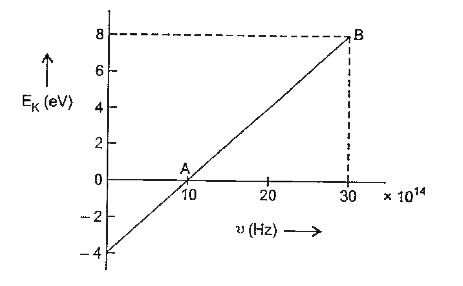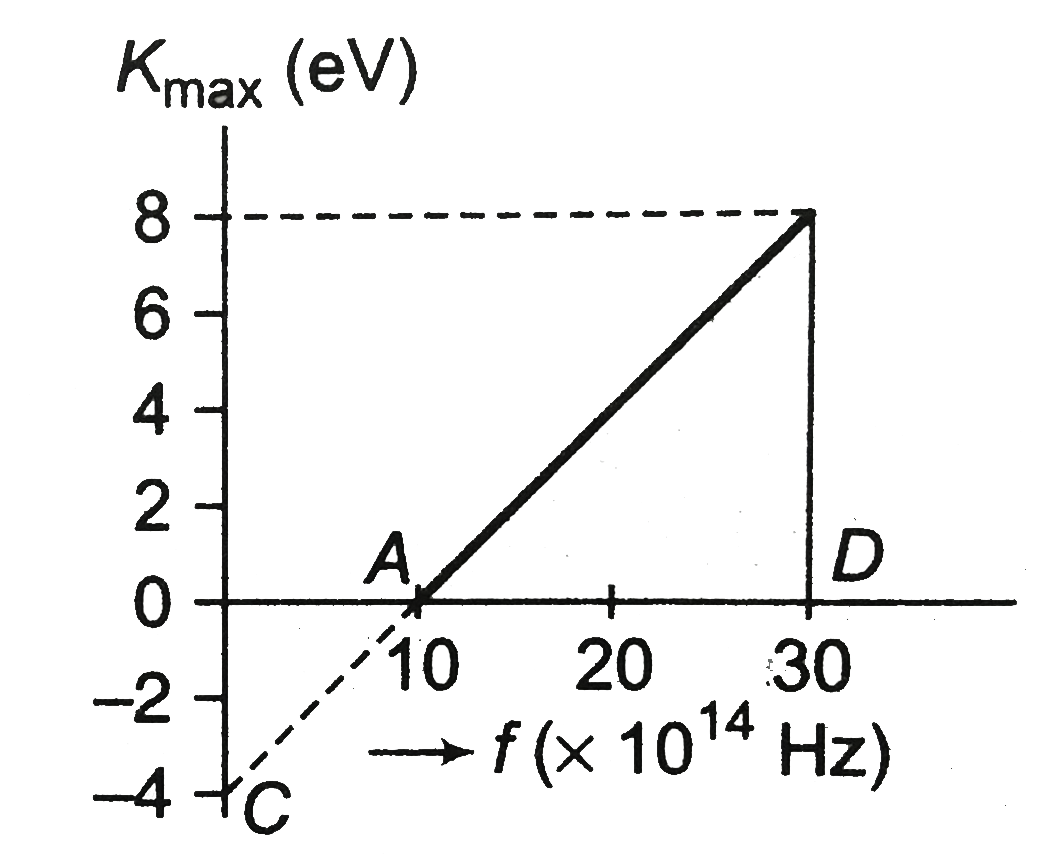Given below is the graph between frequency (V) of the incident light and MaximumKE(Ek) of emittedf photoelectrons. Define the terms Work function
(i) The minimum amount of energy required to emit an electron from metal surface. (II) The minimum amount of freqeuncy required to emit an electron below which no photoelectric effect-
Similar Questions
Given in fig. is the graph between frequency v of the incident light and maximum kinetic energy (Ek) of the emitted photoelectrons. Find the values of (i) threshold frequency and (ii) work function form the graph.
 View Solution
View SolutionGiven in fig. is the graph between frequency v of the incident light and maximum kinetiec energy (Ek) of the emitted photoelectrons. Find the values of (i) threshold frequency and (ii) work function form the graph.
 View Solution
View Solution
Knowledge Check
- Question 1 - Select One
When the frequency fo light incident an a metallic plate is doubled , the 1KE of the emitted photoelectrons will be :
ADoubleBHalvedCIncreased but more than doubled fo the previous KEDUnchanged - Question 2 - Select One
The frequency of incident light falling on a photosensitive metal plate is doubled, the KE of the emitted photoelectrons is
Adouble the earlier valueBunchangedCmore than doubledDless than doubled - Question 3 - Select One
If the work function of a metal is 'ϕ' and the frequency of the incident light is 'v', there is no emission of photoelectron if
Av<ϕhBv=ϕhCv>ϕhDv≥ϕh
The frequency of incident light falling on a photosensitive metal plate is doubled, the KE of the emitted photoelectrons is
View SolutionIf the work function of a metal is 'ϕ' and the frequency of the incident light is 'v', there is no emission of photoelectron if
View SolutionIn an experiment of photo-electric effect, the graph of maximum kinetic energy Ek of the emitted photoelectrons versus the frequency v of the incident light is a straight line AB as shown in figure below :

Work function of the metal.View SolutionThe given graph shows the variation of KE with frequency of incident radiations for two surfaces A and B.

(a) Which of the metals has greater work function ? For which of the metals will stopping potential be more for the same frequency of incident radiation ?
(b) The work function caesium metal is 2.14 eV. When light of frequency 6×1014 Hz. incident on the metal surface , what is the maximum KE of the photoelectrons and stopping potential ?View SolutionA graph regarding photoelectric effect is shown between the maximum kinetic energy of electrons and the frequency of the incident light. On the basis of data as shown in the graph, calculate (a) threshold frequency , (b) work- function, (c ) planck constant
 View Solution
View Solution

